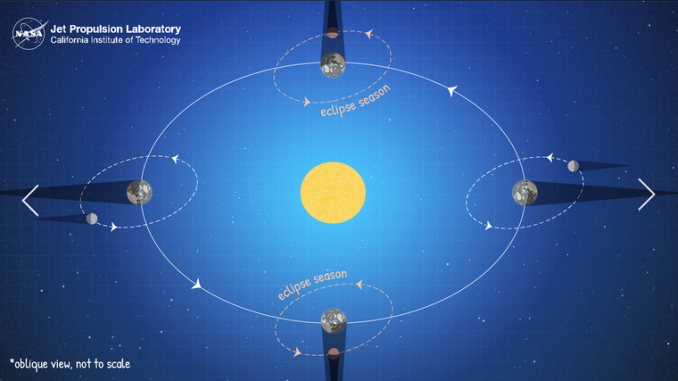
Here comes a total lunar eclipse and supermoon, all wrapped into one.
The moon, Earth and sun will line up on Sunday (Jan. 20) for the only total lunar eclipse this year and next. At the same time, the moon will be ever so much closer to Earth and appear slightly bigger and brighter than usual — a supermoon.
“This one is particularly good,” said Rice University astrophysicist Patrick Hartigan. “It not only is a supermoon and it’s a total eclipse, but the total eclipse also lasts pretty long. It’s about an hour.”
Exact times
It begins with the partial phase at 7:34 p.m. PST Sunday. That’s when Earth’s shadow will begin to nip at the moon. Totality — when Earth’s shadow completely blankets the moon — will last 62 minutes, beginning at 8:41 p.m. PST Sunday.
During totality, the moon will look red because of sunlight scattering off Earth’s atmosphere. That’s why an eclipsed moon is sometimes known as a blood moon. In January, the full moon is also sometimes known as the wolf moon or great spirit moon.
So informally speaking, the upcoming lunar eclipse will be a super blood wolf — or great spirit — moon.
In the U.S., the eclipse will begin relatively early Sunday evening, making it easier for children to stay up and enjoy the show. Plus the next day is a federal holiday, with most schools closed. But the weather forecast for much of the U.S. doesn’t look good.
Parents “can keep their kids up maybe a little bit later,” said Hartigan, who will catch the lunar extravaganza from Houston. “It’s just a wonderful thing for the whole family to see because it’s fairly rare to have all these things kind of come together at the same time.”
No special equipment needed
“The good thing about this is that you don’t need any special equipment,” he added.
The next total lunar eclipse won’t be until May 2021.
As for full moon super moons, this will be the first of three this year. The upcoming super moon will be about 222,000 miles away. The Feb. 19 super moon will be a bit closer and one in March will be the farthest.
— By the Associated Press
